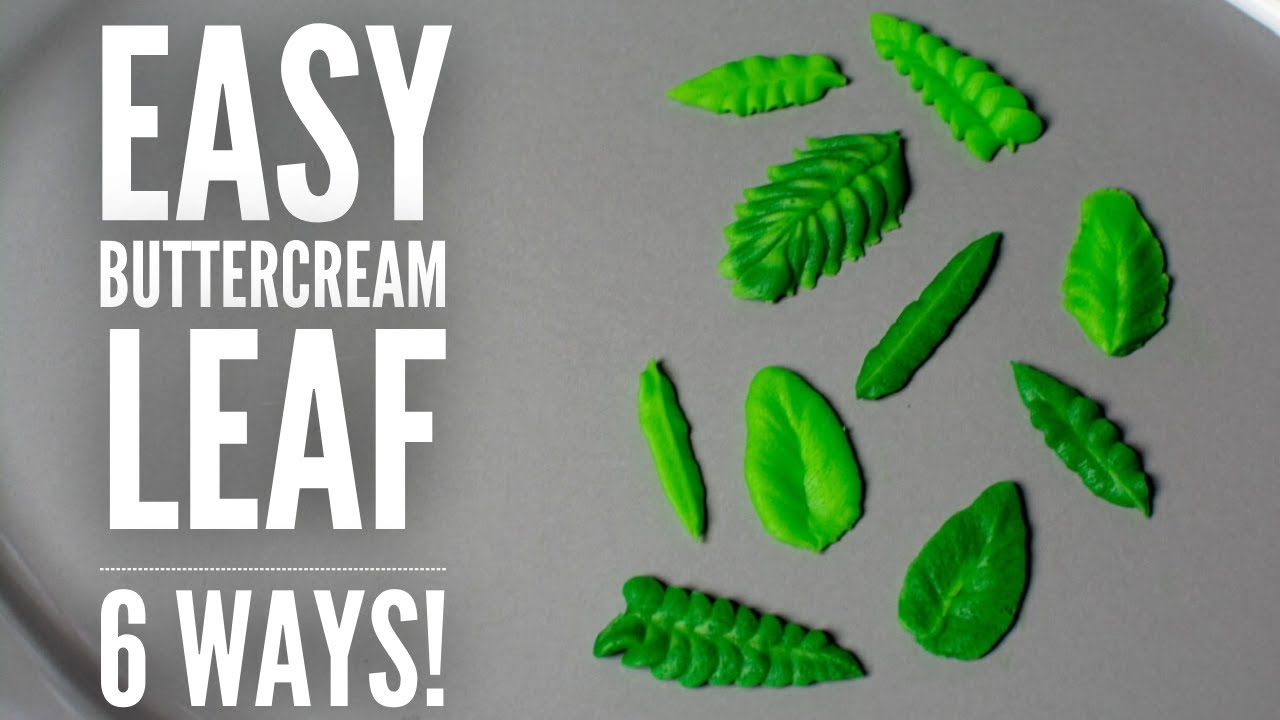Piping leaves is a delightful technique that adds an elegant touch to any baked creation. Whether you're a beginner or an experienced baker, mastering the art of piping leaves can take your cake decorating skills to the next level. In this comprehensive guide, we will explore the essential steps and techniques required to pipe leaves with finesse and precision. So, grab your piping bag, dust off your creativity, and let's dive into the world of beautifully piped leaves.
How to pipe leaves
1. Gather Your Tools and Materials
Before you embark on your leaf piping journey, it's important to assemble all the necessary tools and materials. Here's a list of items you'll need:
- Piping bags: Choose a disposable or reusable piping bag that feels comfortable in your hand. Make sure to have a few on hand to accommodate different colors and sizes.
- Piping tips: Leaf tips are specifically designed to create lifelike leaf shapes. The most commonly used leaf tip is the Wilton #352 tip, which has a pointed end and two curved sides.
- Couplers: Couplers allow you to easily change tips without changing the piping bag. They consist of a base that fits inside the piping bag and a ring that secures the tip in place.
- Gel food coloring: Use gel-based food coloring to achieve vibrant and consistent colors. Gel colors are more concentrated, so a little goes a long way.
- Leaf templates: These can be useful for practicing and getting familiar with different leaf shapes. You can find printable templates online or draw your own.
2. Prepare Your Piping Bag
Start by trimming the tip of the piping bag to accommodate the size of the leaf tip you'll be using. Insert the coupler base into the piping bag, and then screw on the ring to secure it in place. If you're not using a coupler, simply fit the leaf tip into the bag, making sure it extends past the opening.
3. Color Your Icing
Divide your icing into separate bowls if you plan to pipe leaves of different colors. Add a small amount of gel food coloring to each bowl and mix thoroughly until you achieve the desired shade. Remember to start with a little color and gradually add more until you reach the right intensity.
4. Practice the Basic Leaf Shape
To get comfortable with piping leaves, it's essential to practice the basic leaf shape. Place a leaf template underneath a sheet of parchment paper or a practice board. Hold the piping bag at a 45-degree angle, with the wider opening of the leaf tip facing outward. Squeeze the piping bag gently while moving your hand in a steady, curved motion to create the leaf shape. Practice this motion until you can produce consistent leaf shapes.
5. Varying Leaf Sizes
Creating leaves of different sizes adds depth and visual interest to your designs. To achieve varying leaf sizes, you can either switch to a different-sized leaf tip or adjust the amount of pressure applied to the piping bag. Applying more pressure will result in larger leaves, while lighter pressure will create smaller ones. Experiment with different techniques to find the right balance for your desired effect.
6. Adding Veins and Details
To make your piped leaves more realistic, consider adding veins and details. Once you've piped a leaf shape, use a small brush or toothpick to gently drag lines from the center vein outwards. This technique adds texture and depth to the leaf. Experiment with different vein patterns to create a variety of leaf designs.
7. Leaf Color Blending
Blending colors on a single leaf can create stunning visual effects. To achieve this, start by applying a base color to the leaf using a piping bag filled with one color. Before the base color dries, use a second piping bag filled with a contrasting color to pipe streaks or dots on top. Gently blend the colors together using a toothpick or a small brush to create a seamless transition.
8. Incorporating Leaves Into Designs
Piped leaves can be used to enhance various cake designs. They can be arranged as borders, clustered together to create wreaths, or used to adorn individual cupcakes. Experiment with different placements and combinations to find the perfect fit for your design.
Conclusion
Piping leaves is a skill that elevates your cake decorating abilities to new heights. With practice and patience, you can achieve beautifully piped leaves that enhance the overall aesthetic of your baked creations. Remember to gather the necessary tools, practice the basic leaf shape, and experiment with different techniques such as adding veins and blending colors. So, unleash your creativity, enjoy the process, and let your piped leaves become a signature element in your cake decorating repertoire.
